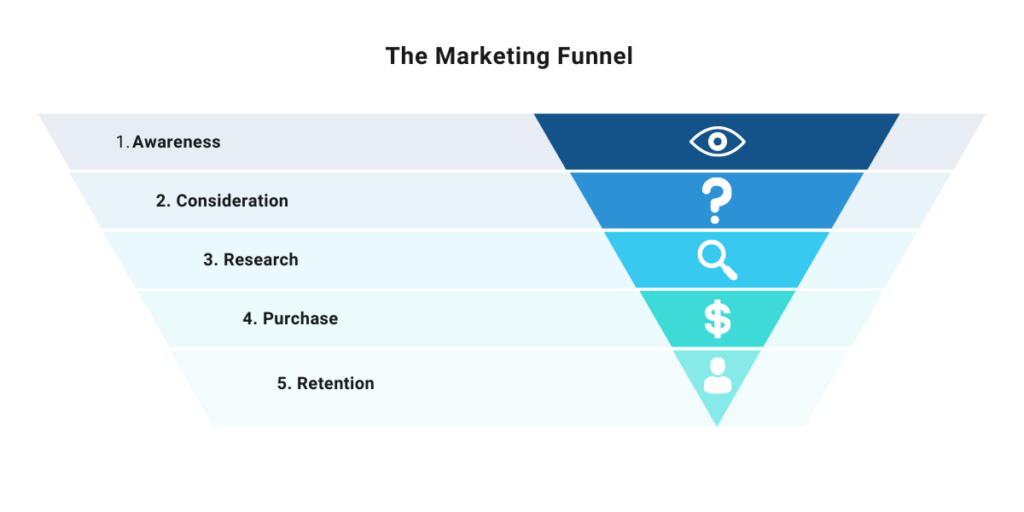Last updated on November 23rd, 2022
The importance of content marketing has been well established as we transition into the coming years. While it primarily serves to engage with your audience across social channels, it also helps educate them, thus generating leads and resulting in better conversions. While content marketing is now the norm regardless of your domain, each demands its unique approach.
Financial Technology, or Fintech as it’s commonly referred to, is one such domain. Its content marketing needs are unique, simply because of the nature of the domain itself. Fintechs rely heavily on their audience’s trust, and they can only achieve this by educating them about their products and their benefits with the utmost transparency. If you’re a fintech or are planning on starting one, this article will give you eight key tips for successful fintech content marketing.
7 Best Fintech Content Marketing Tips That Drive Results
1. Content Marketing Must Be Backed by a Content Strategy
Every content marketing initiative must follow a content strategy. If you’re wondering how the two are different, here’s a quick roundup – content marketing includes blogs, guest posts, white papers, and reports, while a content strategy gives you a framework that sets goals and helps measure the efficacy of these marketing practices. Without a content strategy, content marketing would simply involve creating and publishing content, and hoping it brings in desirable results.

On the other hand, a content strategy helps lay down a set of objectives and metrics that form the foundation of your content marketing efforts. Let’s take a look at Google Pay, a UPI-based payment app launched in India in September 2017.
For instance, in its second year, the app saw a 3x growth to 67 million monthly active users. Let’s say for instance, that their target as per their marketing strategy was to reach about 50 million monthly active users in the same period. This objective would then form part of their strategy, thus laying down an objective for their content marketing efforts.
The same works for every fintech – a content strategy is a must for fintech content marketing to be successful.
2. Your Content Must Focus on Educating Your Audience

Fintech can be a rather complicated domain for the average consumer to understand. The same goes for specific fintech offerings. The overarching goal of fintech content marketing must thus be to educate your audience about the benefits of your product or service and highlight the problems it solves. You must remember that the average consumer probably won’t understand the technology powering your product. On the contrary, their primary concern is knowing how it can make their financial operations easier while being safe.
Let’s take the example of Google Pay again. When the government at the centre banned the 500 and 1000 denominations, people found it rather difficult to always have cash in their wallets (as banks and ATMs were unable to meet the demand for money) This demonetisation is what formed the bedrock for the rise of cashless payments in India.
However, suppose Google Pay was advertised initially on the back of the technology behind UPI. In that case, the chances are that it wouldn’t have achieved the kind of initial success that it did. This is because the UPI system had already been launched a year earlier.
Instead, their approach was to simply tell their audiences how their product would make it easier for them to safely make payments using their smartphones, and thus eliminate the need to carry cash. This, to put it in specific terms, was their value proposition. Add to this an enticing rewards program, and you have yourself a product that continues to grow steadily even three years later.
The unsaid factor here is trust. Every fintech must get their consumers to trust them, and understandably so, especially since their usage relies on our money being safe.
3. Your Content Should Cater to Every Stage of the Marketing Funnel
Given the nature of the domain and the technicalities that come with it, the buying cycle is longer than most others. In fact, it can take an average of three months to even a year to convert a lead into a customer, regardless of whether you’re business or customer-facing.

Additionally, given that success as a fintech relies heavily on gaining your audience’s trust, it’s pertinent that your approach to fintech content marketing is consistent while continuing to educate. This can only be achieved through consistently marketing your offering across all social channels, while also addressing any possible concerns your audiences may have.
A simple example could be the safety of their money itself. As a content marketer, it’s your job to convince your audiences that their money will indeed be safe and that your product has a lot to offer them.
Going further down the funnel as well, your content marketing must be tailored to your buyer personas. Doing this can include highlighting your product’s benefits in light of its competition, to further convince potential leads. The same goes for the final stage of the funnel as well.
However, this isn’t the end of it. Customer retention will further rely on how well you continue to support existing users of your product. Addressing their pain points, highlighting how the product can be used to make transactions easier, and assuring them of consistent improvements to your software will play a huge role.
4. Engage Audiences Across All Social Channels
Every social media platform presents its own potential leads. If you are to successfully establish yourself as a product that’s worth considering, you must consistently interact with audiences across all social channels as part of your fintech’s content marketing. Additionally, sharing all your content on your social media handles is essential as it broadens your footprint.
All throughout 2020, and even going ahead, video is poised to be one of the most effective content marketing tools. And this holds even truer for the fintech sector. You must utilize high-quality video content that explains your products and services to your audiences, more importantly, because the video is a lot more attractive than text-rich blogs.
To make the process of handling your social media easier, you should look into a social media management tool to organize and schedule all your social content based on your content calendar. This will ensure consistency, which is key to building your authority on these platforms.
5. Hire Expert Content Writers to Create Your Content for You
Every single day can be challenging when handling and growing your fintech. And now that content has been established as your best bet, you must ensure that the content you put out is authoritative, well-written, and comprehensive, to build yourself as a thought leader in your domain.
Sometimes, however, this is easier said than done. Smaller teams can often find it hard to handle the tech, logistics, and content all at the same time. This is where it’s wise to hire expert content writers who can create content for your fintech with your vision in mind. It takes a huge chunk of work off your plate and gives you more time to focus on improving your product.
6. Building Backlinks Will Greatly Help Build Your Authority
Going ahead, generating backlinks is bound to be one of the best ways for you to build your authority online. Backlinks are absolutely crucial, as they lend credibility to your content. Remember, Google won’t see your content as credible unless people link to it and rely on it as part of theirs. These backlinks will also help increase your domain authority or rating over time, which goes a long way in getting your content onto that first page.
The first thing to do is to identify what kind of backlinks you’d like to achieve. These could be from authoritative websites in your domain or those that include your keyword in their anchor text. These are the websites your backlinking strategy should be aimed at.
Further, you must also create content that’s more likely to be linked. These could be original research, diagrams, infographics, and even list posts. When your content consists of these elements, it’s more likely to be linked, thus boosting your domain’s authority over time.
Additionally, email marketing is also a brilliant way to gain backlinks. If you want to find out how you can effectively use backlinks as a part of your content marketing strategy, check out our in-depth guide to building backlinks.
7. Create High-Quality Content That Ranks Higher on Search Engines
Last but not least, creating high-quality content should always be your top priority. The best way to achieve this is by assuming a content gap in whichever topic you’re creating content on. By doing this, you automatically aim to be as comprehensive as possible. It also leads you to maintain a sense of consistency across all your content, thus reflecting your brand’s tone.
With Google’s algorithms constantly being updated and improved, the need for high-quality content is essential if you want it to be present on that lucrative first page of Google’s results.
Read More: 25+ Content Marketing Tools – Drive Growth For Your Business
In Conclusion
Fintechs find themselves in a unique position owing to the length of the buying cycle. The need to establish the truth is paramount, and even more so when you’re business-facing. The best way for you to establish this trust is through effective and consistent content marketing. We hope this guide helped you figure out what you should include in your fintech content marketing strategy.
At WittyPen, we strive to create high-quality content that helps scale your business. If you’re in the market for expert content writers in your domain that you can trust, check out our services here.
Until then, good luck with growing your fintech!









